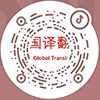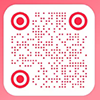Specific Solutions
How Do Translation Companies Price Their Services?
— Understanding the Value Behind Every Quotation
When reaching out to a translation company, one of the most common questions clients ask is:
“How do you determine your pricing?”
At first glance, it may seem like a simple formula—word count times a fixed rate. But in reality, translation pricing reflects a wide range of variables, including language pair, subject matter, turnaround time, file type, and service depth.
This article outlines the standard pricing methods used by translation providers and the key factors that influence how quotes are calculated.
I. Common Pricing Methods in the Translation Industry
1. By Word or Character (Most Common)
For Chinese source texts: usually calculated per 1,000 characters (excluding punctuation)
For English and other languages: usually calculated per word
Best suited for general document translation such as contracts, reports, presentations, articles, and business content.
2. By Page
Often used for standard-format documents such as:
IDs and certificates (e.g., passports, diplomas, licenses)
Scanned PDFs and notarized documents
3. By Hour
Applied in interpretation services, including:
On-site or remote interpreting
Consecutive and simultaneous interpretation
Small-language-pair assignments with short lead times
4. By Project (Package Rate)
For multi-language projects or large volumes involving multiple services (e.g., translation, editing, formatting, subtitling, voiceover), a flat or package price may be proposed based on the total scope.
II. What Factors Influence Translation Pricing?
Even when word counts are similar, pricing may vary depending on:
1. Language Pair
Common pairs (e.g., English–Chinese, Japanese–Chinese) are usually more competitively priced
Less common languages (e.g., Arabic, Czech, Dutch) may cost more due to limited supply
Translation between two non-native languages (e.g., French–Korean) often carries a premium
2. Subject Matter and Complexity
General content (e.g., internal communication, marketing emails) is easier to handle
Specialized fields (e.g., legal, medical, finance, engineering) require expert knowledge and precise terminology—adding time and cost
3. Turnaround Time (Urgency)
Standard turnaround times are priced normally
Urgent or same-day requests involve resource reallocation, overtime, or late-night work—resulting in rush fees
High-volume projects with tight deadlines may require team coordination and terminology management
4. Value-Added Services
Pricing may include optional or premium services such as:
Native-language editing or proofreading
Multilingual typesetting (e.g., PPT formatting)
Subtitling, transcription, or voiceover preparation
Certified translation with official seals or statements
5. File Format and Technical Requirements
Editable formats (e.g., Word, Excel) are easier to process
Non-editable formats (e.g., scanned PDFs, images, handwritten documents) may require OCR or manual reformatting
III. What Does the Quotation Process Typically Involve?
Needs Assessment
The client shares the source file, target language, purpose, and delivery timeframeProject Evaluation
The project manager reviews subject matter, formatting, terminology needs, and volumeQuotation Preparation
A formal quote is provided, usually outlining:Language pair
Estimated word count or page count
Delivery schedule
Scope of services
Payment terms
Confirmation and Project Kickoff
A service agreement or email confirmation is established before work begins
IV. Common Misconceptions to Avoid
❌ “Cheaper means better value”: Translation is not a commodity—low rates often come with risks in quality, accuracy, or reliability
✅ “Fit-for-purpose quality at a reasonable rate” is the best value approach
❌ “Machine translation is good enough”: For legal, business, academic, or published content, human translation with expert review is essential
✅ Professional translation ensures trust, compliance, and clarity
V. Final Thoughts: Translation Pricing Reflects Expertise, Effort, and Assurance
A reputable translation company is not the one with the lowest quote—it’s the one that can clearly explain what’s included, why it matters, and how the value is delivered.
Translation isn’t just about words. It’s about clear communication, cultural alignment, and brand credibility.
Understanding the pricing structure is the first step to building a trusted partnership with your language service provider.


















